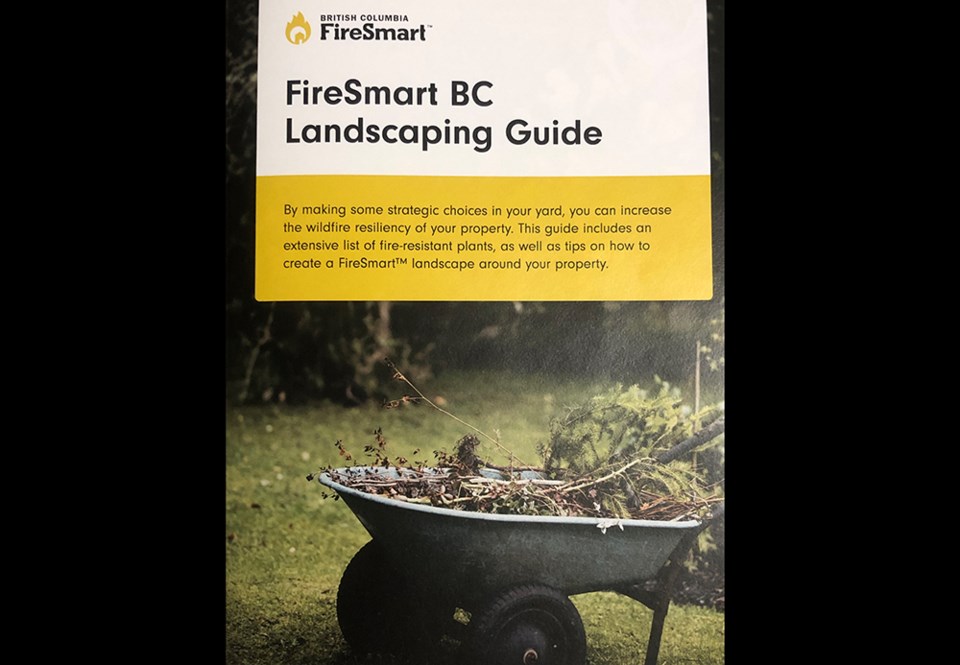In urban areas, we seldom think about fire safety in our gardens, but in outlying regions, where folks live in forested areas and grasslands, it is a growing concern.
As we move into the warmer temperatures of summer, with less rainfall and with water restrictions, we all need to be more aware of potential fire hazards.
One of the greatest concerns is the ability of wildfire embers jumping ahead, sometimes up to two kilometres, where they can ignite a wide variety of combustible materials.
BC FireSmart is an association of various B.C. stakeholders, including First Nations, whose primary goal is to create an awareness of how we can make our homes and properties more fire safe.
To address this issue, Emergency Management BC, the Union of BC Municipalities (UBCM), the BC Wildfire Service and the First Nations Emergency Services have collaborated to produce the FireSmart BC Landscaping Guide.
This invaluable guide is designed to help make properties more resilient to any potential fire situation. Many folks are not aware that trees, like spruce, cedar, juniper and fir, are highly combustible, while most deciduous trees, shrubs and perennials are far less so.
The guide focuses on priority zones around a property, such as creating a non-combustible immediate zone of 0 to 1.5 metres from buildings; an intermediate zone of 1.5 to 10 metres away; and an extended zone of 10 to 30 metres away from your home and other buildings.
The spacing of trees and shrubs is also very important to slow down the spread of a potential fire. Proper tree maintenance and the pruning and eliminating of dead branches, which are highly flammable, are essential tasks in a FireSmart garden.
With water restrictions, municipalities are requesting us to let our lawns go brown during summer; but when grass dies back, it becomes more combustible.
Mowing our lawns lower than 10 centimetres will not only help reduce the risk but will also mean they need less water and will transpire far less moisture into the atmosphere every evening. As little as 2.5 centimetres of water a week can keep a lawn green and much less of a hazard.
This guide also has an extensive list of FireSmart trees, shrubs, perennials and annuals that are better choices in potential fire hazard areas. In addition, it provides great information on mulches and other FireSmart gardening practices.
Many garden stores who support this FireSmart program have the guides available, or you can get one from FireSmart booths which are usually present at community safety and home and garden events.
This is a great program to create awareness of fire safety in and around our homes and gardens.



